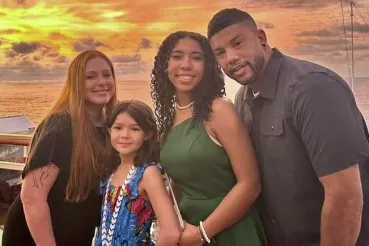Now that we’ve been in the COVID-19 pandemic for more than a year, it’s clear that it has affected all aspects of our lives. And the anxiety associated with the virus is still very present.
Many continue to worry about their own health, the health of loved ones and the ever-changing news about the virus. Further, the social isolation due to COVID-19 has made coping with stress and emotions more daunting and overwhelming.
Rush mindfulness expert and doctor of Chinese medicine Angela Lorbeck shares tips for incorporating mindfulness practice into your life to help manage your emotions and anxiety and improve your ability to focus.
What is mindfulness?
Mindfulness practice is a way of calming both mind and body by responding to thoughts and emotions in the present moment, in a compassionate and nonjudgmental manner.
"Our minds are naturally wired to take flight and get caught up in regrets about the past and worries about the future — a phenomenon called mind wandering," Lorbeck explains. "That causes the stress response to kick in and make us anxious."
Using mindfulness techniques like meditation, focused breathing and mental imagery can help us become aware of mind wandering, Lorbeck says, and "kindly shift our attention to the present, instead of going down the rabbit hole about the past and future."
The benefits of mindfulness
The benefits of mindfulness, and of meditation in particular, have been documented by clinical research. It can help do the following:
- Boost memory
- Improve focus
- Decrease anxiety
- Lower blood pressure
- Enhance sleep
- Reduce the effects of some chronic conditions
- Decrease feelings of loneliness
And, Lorbeck says, it can help us be kinder to ourselves. "Instead of reacting to everything that happens, taking a mindful pause gives us a moment to respond in a more healthy way."
When you have a mindfulness habit, you can gently bring yourself back to where you want to be instead of stressing out.
How to start a practice
Mindfulness practice often includes setting a daily intention that helps you get where you want to be: "Today, I'll move more," or "Today, I'll connect with friends by phone."
"One of the great things about mindfulness practice is that it doesn't require you to go anywhere special, or buy equipment, or join anything," Lorbeck says. "You can do it wherever you are, by yourself or with others."
But it is a practice, she emphasizes, and there are techniques to learn. Many community centers, senior centers and yoga studios also offer introductory classes, and apps like Headspace, Calm and 10% Happier provide guidance you can access anytime.
And if you stray from your intention?
Don't dwell on it, Lorbeck says. "It happens to everyone, but using the 'begin again' mantra may be helpful. When you have a mindfulness habit, you can gently bring yourself back to where you want to be instead of beating yourself up about a broken resolution."
Take a mindful moment
Taking a mindful moment can be as simple as doing a deep breathing exercise, which calms the sympathetic nervous system when you’re feeling anxious.
The 4-7-8 breathing technique can be helpful. Here’s how to do it:
- Exhale completely.
- Inhale gently through your nose while counting to 4.
- Hold your breath for a count of 7.
- Exhale forcefully through pursed lips, making a “whoosh” sound, while counting to 8.
- Repeat the cycle up to 4 times.




